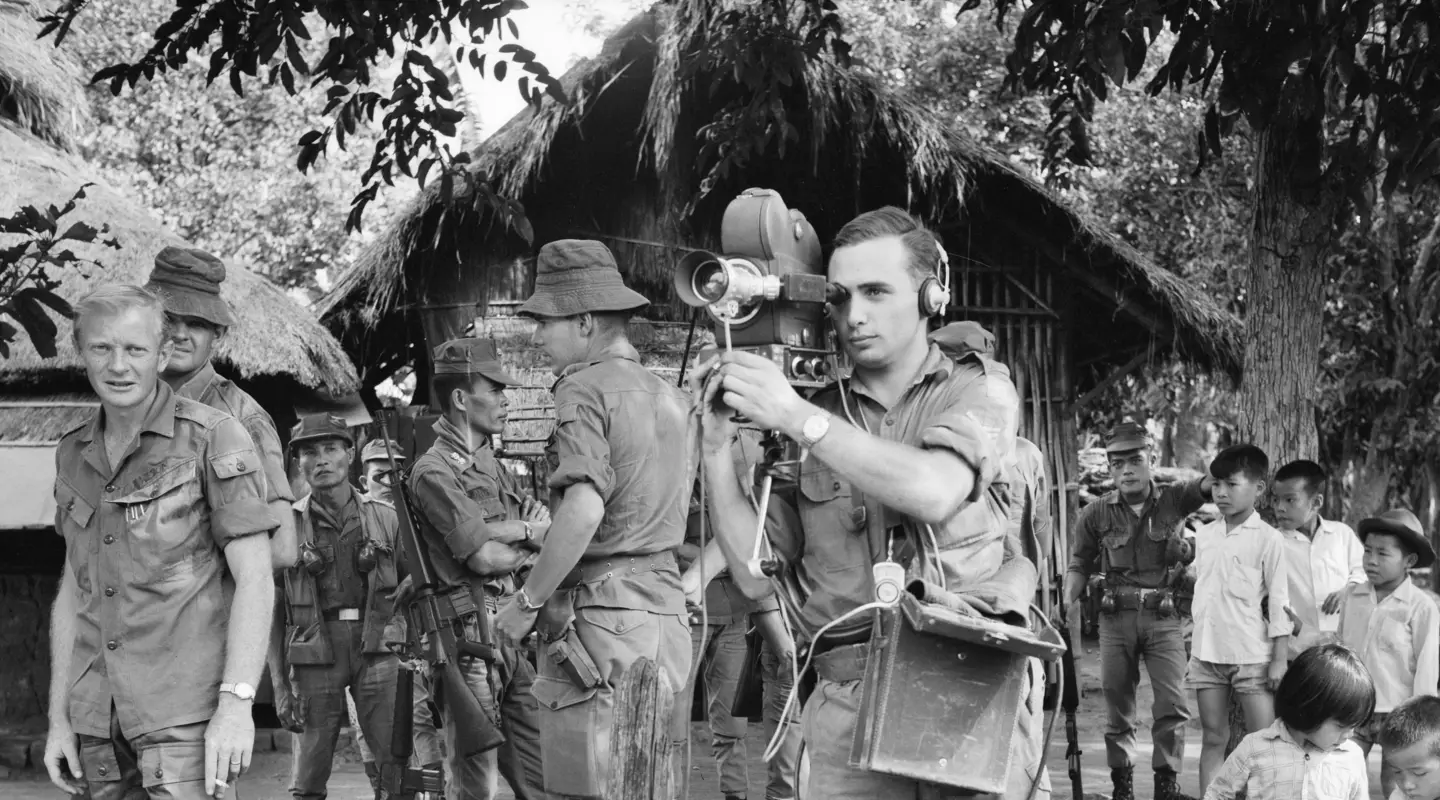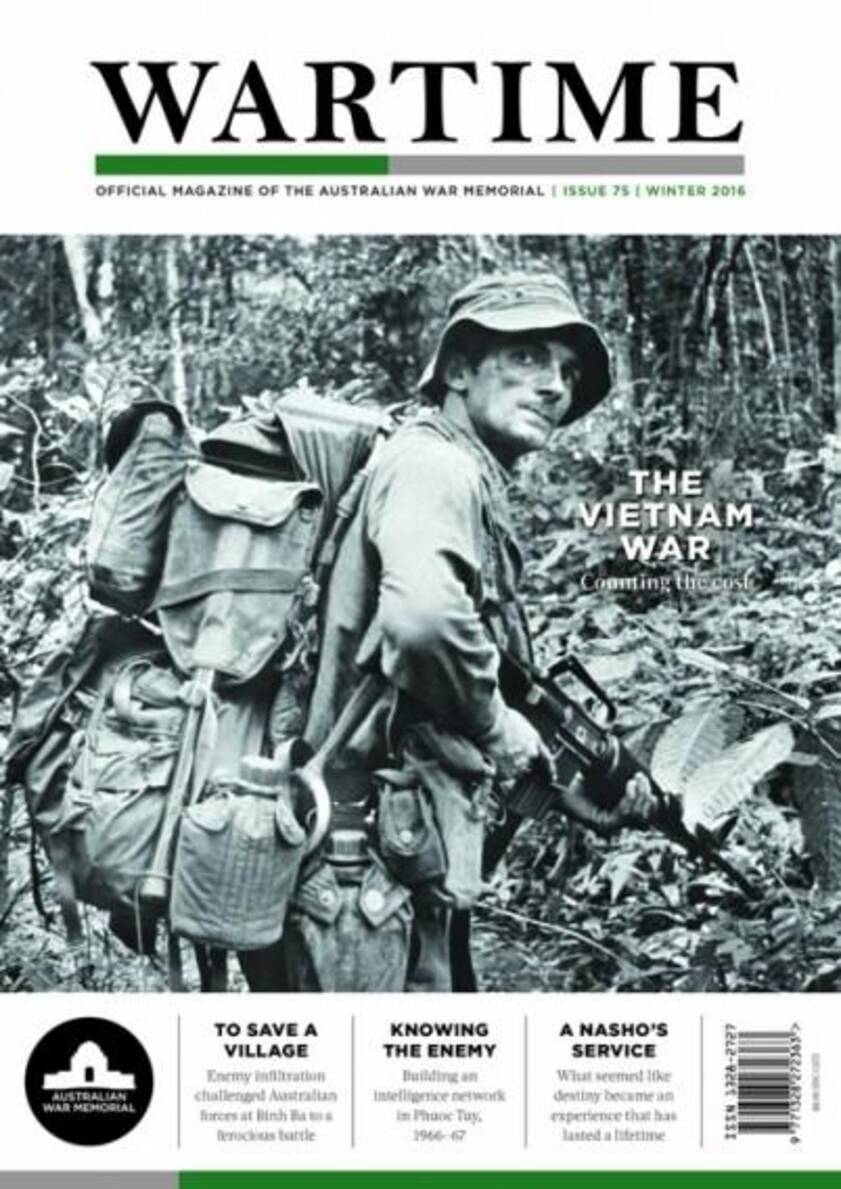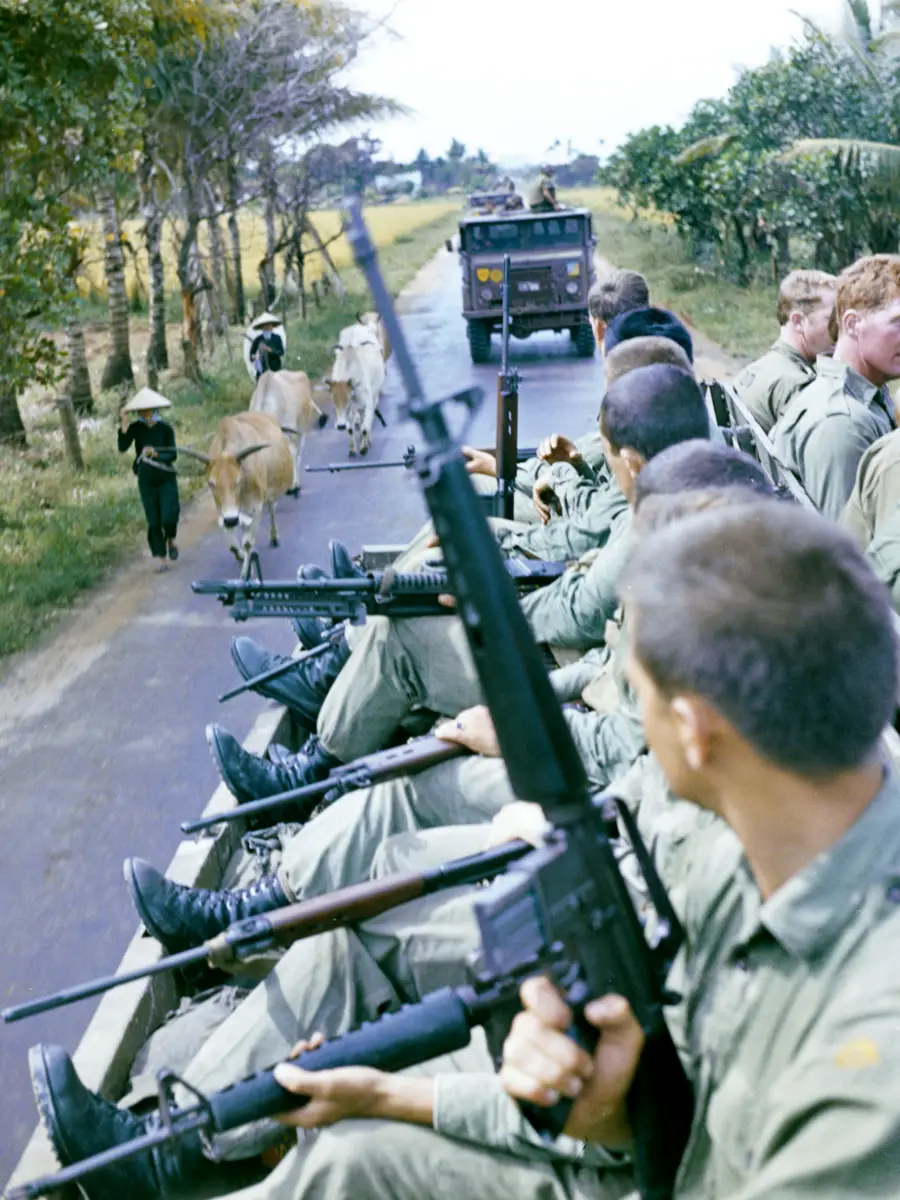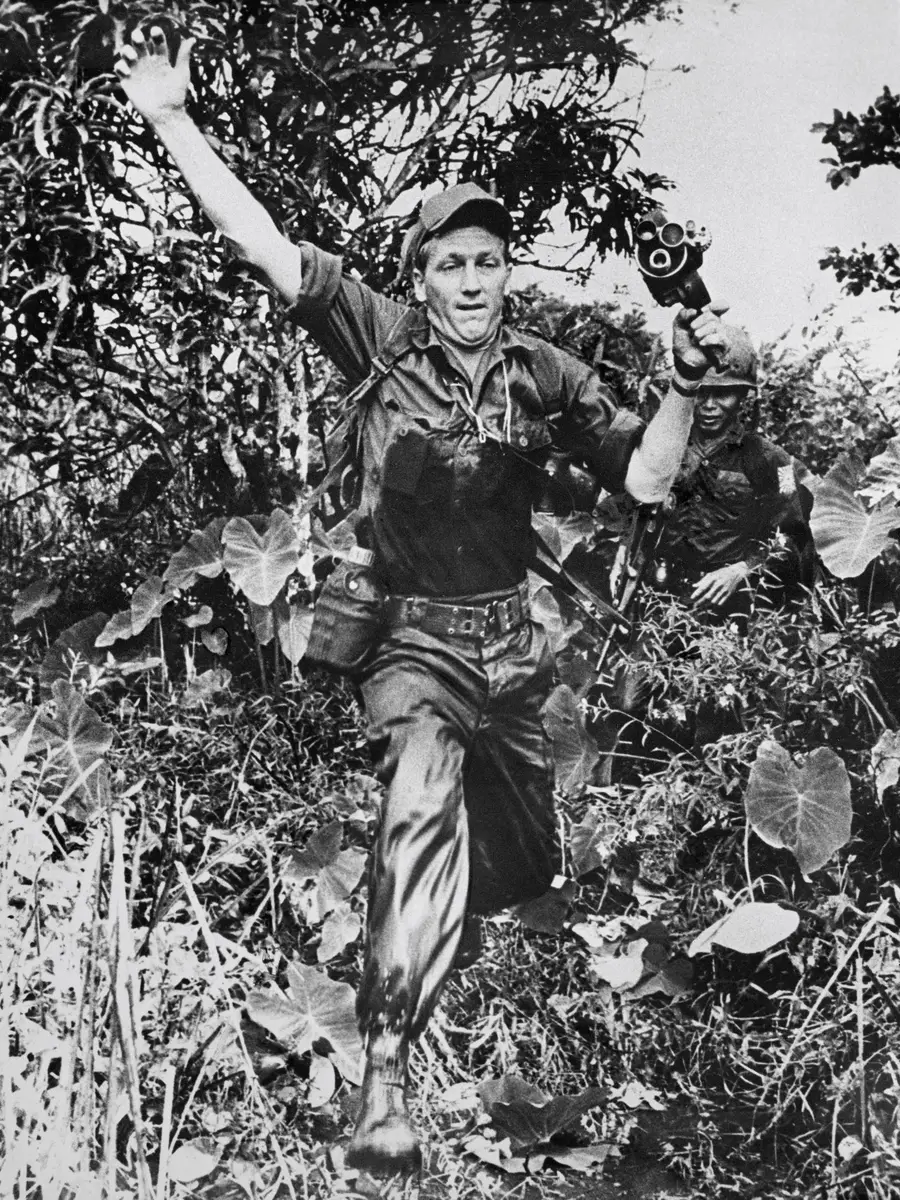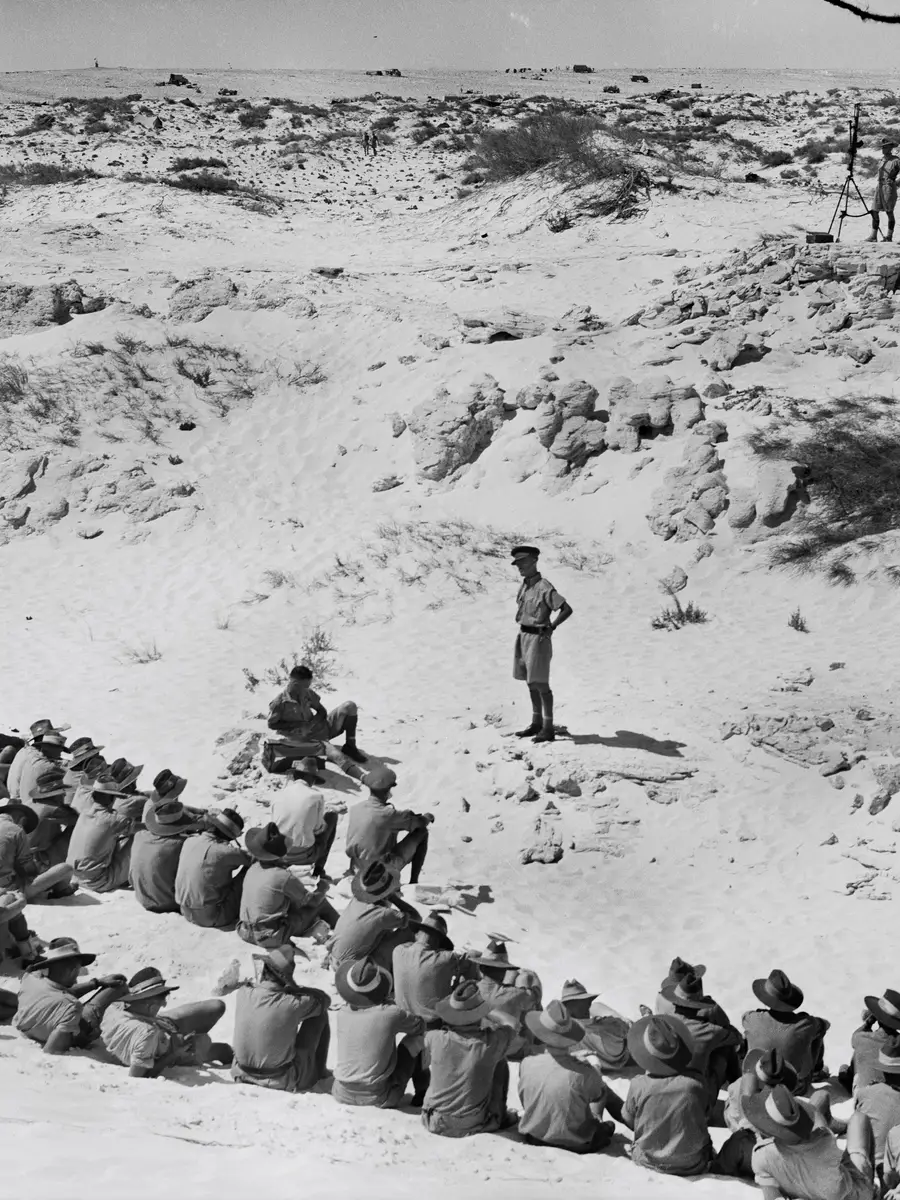During a 1969 patrol on the Saigon River, PR photographer Sgt David Combe risked his life to save fellow soldiers after their raft capsized. His images and account capture both the dangers of Vietnam and the dedication behind the lens.
On 17 January 1969, members of the Defence and Employment Platoon of Headquarters Company, 1st Australian Task Force, set out to patrol the waterways of the Saigon River delta in four aluminium flat-bottomed assault rafts.

Sapper Darryl Lavis (left) and Sapper Edward Podlich at the tiller of the assault raft. 17 January 1969.
Riding in the last boat was Sergeant David Reginald Combe, an army PR photographer. In addition to his standard kit of flak jacket, steel helmet and webbing, Combe carried a canvas bag with his Bell and Howell 16-mm cine camera, a Rolleiflex stills camera, and around his neck, a Nikon-F 35-mm camera.
Late in the afternoon, Combe’s raft, heavily laden with men and equipment, started to take on water from the wake of the preceding patrol vessels. Then a freak wave from the incoming tide capsized the struggling vessel, trapping two soldiers beneath it. With his photographic equipment weighing him down, Combe helped to drag the two trapped soldiers clear of the vessel.
The men spent 15 minutes in the muddy water, diving for their equipment, before one of the vessels in their patrol doubled back and assisted the righting the craft. Their raft could not continue, so the patrol went on without them. Combe recounts in his oral history that “there was no sleep that night” as the men spent tense hours in the mangroves with little ammunition and no rations.

Private Len Reeve of Manjimup, WA, scans the riverbank for signs of Viet Cong.
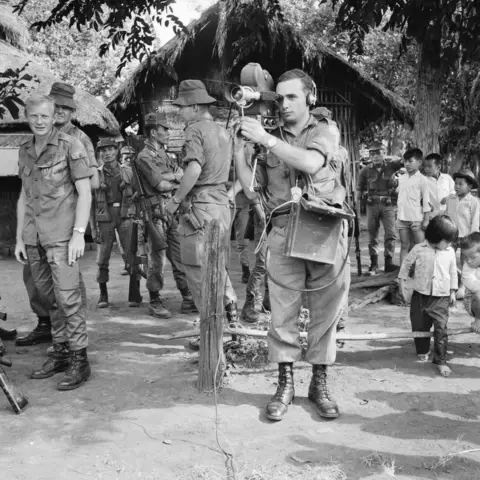
Official Army Public Relations (PR) cinematographer David Combe
At first light, the men retrieved the rest of their equipment in the low tide and carried their raft out to the nearest road to be taken to Fire Support Base Julia. Here, Combe managed to rinse his photographic equipment with fresh water before he flew out to Nui Dat to get his equipment repaired and inform HQ PR of the events of the previous night. He was later commended for his coolness and courage. Combe’s Saigon patrol images show his dedication to documenting the events faced by the troops he accompanied, and reflect his own personal experience of war from the other side of the lens.
The Memorial holds Combe’s official PR photographs, films, and an oral history in the National Collection.
